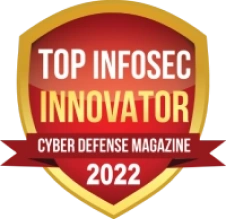How Does RDP Work?
Remote Desktop Protocol (RDP) is a proprietary protocol developed by Microsoft that allows users to connect to and control a remote computer over a network. It works by transmitting the graphical interface of the remote device to the client computer, while user inputs such as keyboard strokes and mouse movements are sent back to the remote machine. This enables seamless interaction with the remote system as if the user were sitting directly in front of it.
The RDP connection process begins with the client initiating a request to connect to a remote server that has RDP enabled. The server authenticates the user based on credentials and security settings before establishing a session. Once authenticated, the client and server communicate through the Remote Desktop Services (RDS) framework, using a series of virtual channels to transmit data such as screen updates, audio, file transfers, and printer redirections. RDP operates on port 3389 by default and supports encryption to protect data transmission from unauthorized access.
A key component of RDP is its ability to compress data, reducing bandwidth usage while maintaining a responsive experience. The protocol uses various encoding techniques to optimize performance, adapting to network conditions to ensure a smooth user experience even over slower connections. Features such as session reconnection, clipboard sharing, and multi-monitor support enhance usability for remote workers and IT administrators.
RDP sessions can be configured in two primary modes: remote control and remote administration. In remote control mode, the session mirrors the desktop experience of the remote computer, allowing the user to interact with applications, files, and settings. Remote administration mode is often used by IT teams to manage systems without interrupting the active session of a logged-in user.
Security is a crucial aspect of RDP, as improperly configured sessions can expose systems to cyber threats. Organizations implementing RDP should use strong authentication methods, enforce network-level authentication (NLA),and restrict access through firewalls and VPNs. Additionally, keeping RDP services updated helps mitigate vulnerabilities that could be exploited by attackers.
Overall, RDP provides an efficient and flexible solution for remote access and system management. By understanding how RDP works and implementing security best practices, businesses and IT professionals can leverage its capabilities for increased productivity, streamlined workflows, and secure remote connectivity.
RDP vs Other Remote Access Solutions
Remote Desktop Protocol (RDP) is a widely used remote access solution, but it is not the only option available. Businesses and IT professionals often compare RDP with other remote access technologies such as Virtual Network Computing (VNC),Secure Shell (SSH),and third-party remote desktop solutions like TeamViewer, AnyDesk, and LogMeIn. Each of these solutions has distinct advantages and use cases, depending on factors such as security, ease of use, performance, and compatibility.
One of the main advantages of RDP is its seamless integration with Windows environments. Since RDP is built into Windows operating systems, it does not require additional software installation on the remote device, making it a convenient choice for businesses that rely on Windows-based infrastructure. RDP also provides robust support for remote administration, allowing IT teams to manage systems efficiently while leveraging built-in security features like Network Level Authentication (NLA) and encryption.
In contrast, VNC is a cross-platform remote access solution that allows users to connect to devices running different operating systems, including Windows, macOS, and Linux. Unlike RDP, which transmits only screen updates and user inputs, VNC shares the entire graphical interface pixel by pixel. This makes VNC more flexible in terms of OS compatibility but can result in higher bandwidth consumption and slower performance compared to RDP.
SSH is another remote access protocol commonly used in Unix and Linux environments. Unlike RDP and VNC, which provide full graphical remote access, SSH operates in a command-line environment, making it ideal for secure remote administration of servers and network devices. SSH is considered more secure than RDP due to its built-in encryption, key-based authentication, and port-forwarding capabilities. However, it lacks a graphical user interface, which may not be suitable for users who require a visual desktop experience.
Third-party remote access tools such as TeamViewer and AnyDesk provide additional features like file transfer, session recording, and cloud-based access, making them popular for both personal and business use. These solutions often include advanced security measures such as two-factor authentication (2FA) and session timeout policies. However, they typically require a subscription and can be more expensive than using RDP.
Ultimately, the choice between RDP and other remote access solutions depends on an organization’s specific needs. RDP is an excellent choice for Windows-based environments that require efficient remote administration, while alternatives like VNC, SSH, and third-party tools provide varying levels of security, compatibility, and functionality to meet different use cases.
Best Practices for Secure RDP Access
Securing Remote Desktop Protocol (RDP) is critical for preventing unauthorized access and protecting sensitive data. Since RDP is a common target for cyberattacks, implementing best practices can significantly reduce security risks such as brute force attacks, ransomware infections, and unauthorized remote control. By following these security measures, businesses and IT administrators can ensure a safe and reliable RDP experience.
The first and most important step is enabling Network Level Authentication (NLA). NLA requires users to authenticate before establishing a session, adding an extra layer of security. This helps prevent unauthorized users from even reaching the login screen, reducing exposure to brute force attacks and credential stuffing.
Another key best practice is using strong, unique passwords and implementing multi-factor authentication (MFA). Attackers frequently exploit weak or reused passwords to gain access to remote systems. Enforcing complex password policies and requiring MFA for RDP sessions ensures that even if a password is compromised, unauthorized access remains unlikely.
Restricting RDP access is also essential for minimizing risk. This includes limiting remote access to only necessary users and devices, using firewalls to restrict connections, and configuring RDP to operate on a non-default port. While RDP typically runs on port 3389, changing it to a different, less predictable port can help reduce automated attack attempts.
For added security, businesses should use Virtual Private Networks (VPNs) or Remote Desktop Gateways to provide a secure channel for RDP connections. VPNs encrypt traffic between the client and the remote machine, preventing attackers from intercepting login credentials. A Remote Desktop Gateway further enhances security by acting as a secure middleman between external connections and internal RDP servers.
Regular software updates and patch management are crucial in securing RDP. Attackers often exploit outdated software vulnerabilities to gain access to systems. Ensuring that Windows, RDP clients, and security tools are up to date helps prevent known exploits from being used in attacks.
Another effective measure is monitoring RDP usage and enabling logging to track login attempts and detect suspicious activity. Businesses should configure event logs to capture failed login attempts, unusual access times, or connections from unexpected locations. Implementing automated alerts for potential threats allows IT teams to respond quickly before an attack escalates.
Finally, disabling RDP when not in use reduces exposure to cyber threats. If RDP is only required occasionally, organizations should disable it by default and enable it only when necessary. This minimizes the attack surface and prevents unauthorized access when RDP is not actively needed.
By following these best practices, organizations can significantly enhance the security of RDP connections, reducing the risk of cyberattacks and ensuring safe remote access for employees and IT administrators.






